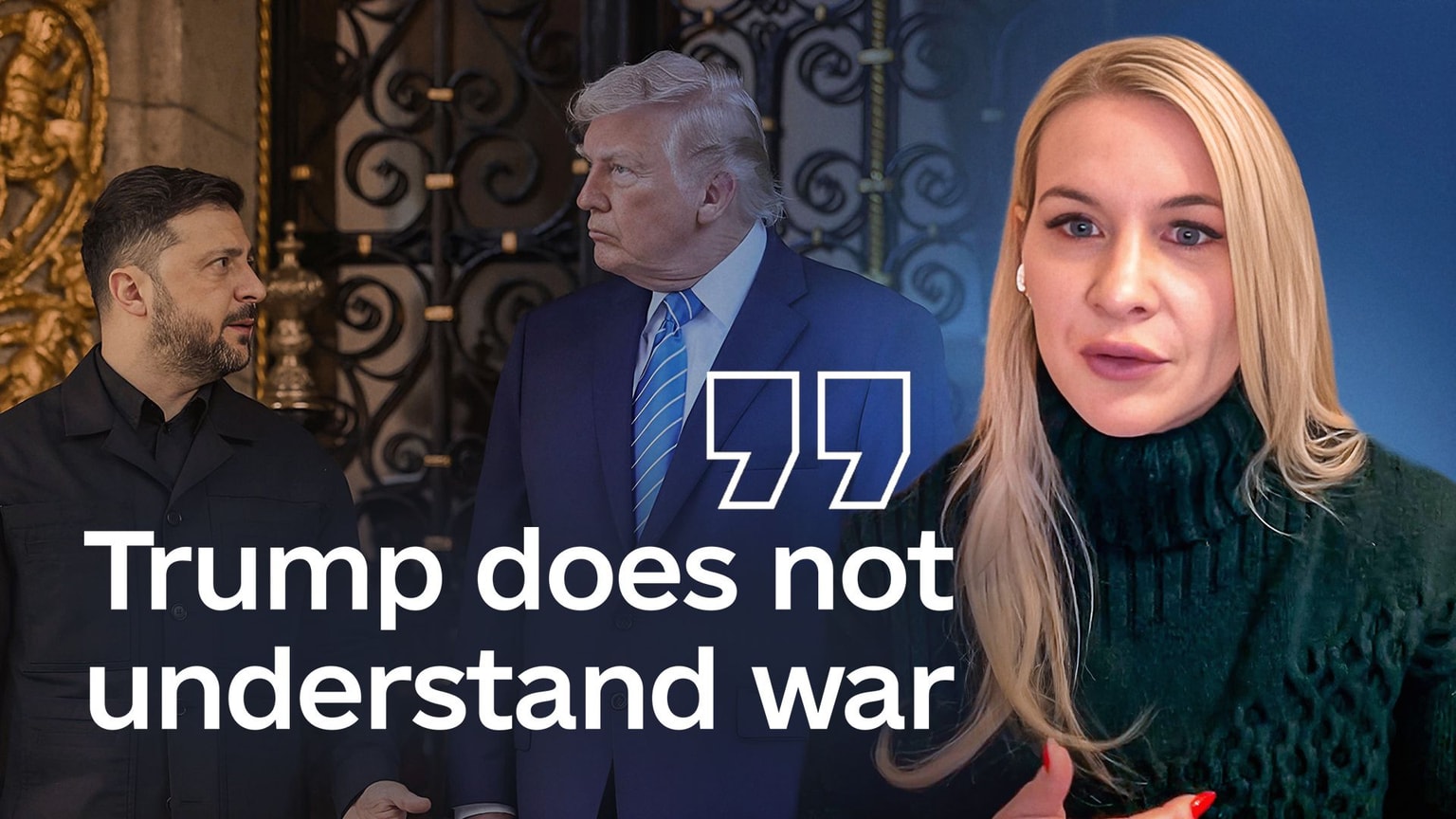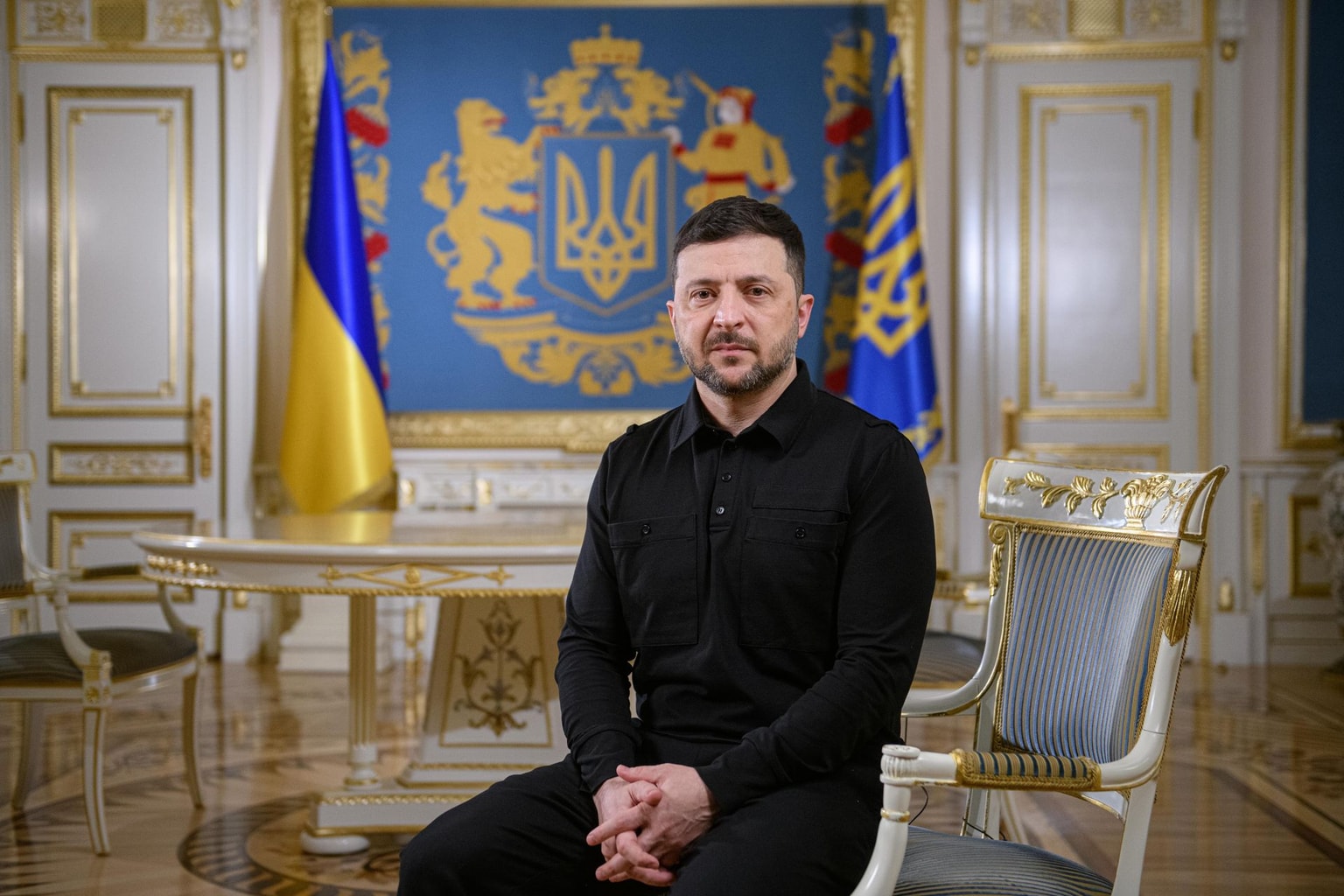
'Ukraine is biggest landmine challenge since World War II,' says head of world’s largest demining organization
Experts of a consolidated squad of the Explosives Service of Ukraine carry out demining work in Kharkiv Oblast, Ukraine, on Oct. 24, 2023. (Vyacheslav Madiyevskyy / Ukrinform/Future Publishing via Getty Images)
Russia's full-scale invasion may have turned Ukraine into the world's largest minefield.
As of March 2025, Ukraine’s mine-affected land spans an estimated 139,000 square kilometers — or 23% of its territory — covering more ground than all of Greece and posing an immense threat to civilian life and recovery efforts.
Clearing landmines and unexploded ordnance is essential to preventing civilian casualties and enabling the safe use of land and infrastructure, fostering the country's recovery and future development.
Demining in Ukraine is primarily carried out by the State Emergency Service and the Armed Forces, with both international and domestic non-governmental organizations contributing to the effort.
The world's largest demining non-governmental organization, the HALO Trust, has operated in Ukraine since 2015 and scaled up its efforts after the full-scale invasion began.
The HALO Trust has cleared nearly 7.9 million square meters of land and located over 41,000 pieces of unexploded ordnance since Feb. 24, 2022.
The organization has grown from a small team of 400 in Kramatorsk, a front-line city in Donetsk Oblast, to a workforce of 1,500 people operating in eight regions across Ukraine.
The Kyiv Independent spoke with James Cowan, the CEO of HALO Trust, about the organization's ongoing effort to rid Ukraine of landmines, his assessment of how long it might take, and what new technology could revolutionize the process.
Editor's note: This interview has been edited and condensed for clarity.
The Kyiv Independent: How would you describe the scale of landmine contamination in Ukraine today, and how does it compare to other conflict zones you've worked in?
James Cowan: The HALO Trust has existed since 1988. We are the world's largest NGO that clears landmines, so we know about other areas of the world.
This is the biggest landmine challenge since World War II.
Unless it's done quickly, it's going to take hundreds of years.

James Cowan in the park after the interview in Kyiv, Ukraine on May 15, 2025.(Elena Kalinichenko/The Kyiv Independent)
The nearest example is the minefield between North and South Korea — it's 178 kilometers long. Ukraine's front line is 1,000 kilometers long, and that is not the only contamination.
There are landmines well inside free Ukraine and landmines well inside Russian-controlled parts of Ukraine.
The Kyiv Independent: Can you describe how your team operates in Ukraine — which regions you're active in, and what the process looks like from detection to removal when a mine or unexploded ordnance is found?
James Cowan: There are three units: one in the north, one in the northeast, and one in the south. We want to expand further, and when it is possible, we would be happy to help Ukraine clear even more parts of the country.
We have survey teams that confirm the contamination and are also trying to shrink the area to the absolute minimum. We then bring in our teams to conduct the clearance.
This is an area where there could be improvement. We work in countries like Afghanistan, which is mountainous; in countries like Cambodia, which is jungle; and in countries like Angola, which is African bush. In those places, mechanical methods are not easy to use. But in Ukraine, there are open fields — some of the best agricultural land in the world. They are the most suitable and optimized environment for mechanical clearance.
We have mechanical diggers, but we're not allowed to deploy them because authorization is very slow. We would ask the Ukrainian government to speed that up because currently, it is very bureaucratic and takes too long. We need to be able to use all the assets available.
Ukraine does not want to be like Afghanistan, where HALO has worked since 1988 and is still working.
The Kyiv Independent: Why is it so difficult to speed up the process?
James Cowan: Every country has its own bureaucracy. Sometimes, government officials aren't as entrepreneurial as those in the private sector. But it would be good to see more speed. This is not a conscious decision but more a bureaucratic inertia.
But Ukraine needs to act because its land is covered in landmines. Without action, Ukraine can't export its grain, open its roads, or bring its population back. Unless it's done quickly, it's going to take hundreds of years.
The Kyiv Independent: Given the ongoing ceasefire negotiations between Ukraine and Russia, do you think demining should also be part of the talks?
James Cowan: If a ceasefire happens, that is the inflection point. It is the point at which everyone's efforts move from a war to a defensive posture, in which, of course, Ukraine's army will continue to protect the sovereignty of their country. Still, the civilian effort will move toward reconstruction and away from the fighting.

At that moment, Ukraine's priority will be to restart its economy, get all that land that hasn't been farmed for three or four years back into use, and allow communities to return to their homes. And it's not just about large-scale farming — it's also about local, small-scale agriculture. Some people haven't been able to grow vegetables, raise goats or sheep, or use their cows and donkeys. They need access to their land again.
It's also about reopening roads, schools, shops, and factories. All these things need to be cleared (from mines), and the whole economy needs to be helped to get up and going.
There is a lot of emphasis on the mineral deal, but you can't mine for minerals without demining for landmines.
The Kyiv Independent: If the war were to end tomorrow, would it be realistic to fully clear all mines in Ukraine within the next 10 years?
James Cowan: If the war were to stop tomorrow along the current front line, it wouldn't be possible to clear landmines on the Russian-occupied side, despite it being sovereign Ukrainian territory, unless Russia allows it.
Combining artificial intelligence with imagery is a key development.
Regarding territory under Ukrainian control, whether all landmines can be cleared within 10 years remains open — but I believe it's possible. If Ukraine applies the same level of innovation and energy to mechanizing demining as it has to advancing drone technology, then yes, I think it's achievable. That said, it's still too early to be certain.
The Kyiv Independent: How do you assess Ukraine's National Mine Action Strategy (approved in June 2024)? In your view, how realistic and effective is it given the current scale of contamination? Has HALO Trust been involved in shaping or advising on the strategy?
James Cowan: I've worked alongside Ukraine's First Deputy Prime Minister, Yulia Svyrydenko. The strategy she's built is a good one.
But all strategies need to evolve; they're not just documents on a dusty shelf, and this one will. I'd particularly like to see the adoption of mechanical clearance.
The Kyiv Independent: What emerging technologies do you see as having the greatest potential to transform demining efforts in Ukraine?
James Cowan: Combining artificial intelligence with imagery is a key development. In terms of detection, there are several exciting technologies, such as synthetic aperture radar, ground-penetrating radar, and magnetic resonance — especially the magnetic resonance methods developed in Australia for detecting rare earth elements like gold, which can also be applied to finding landmines.

There are also cutting-edge nuclear industry technologies, like the neutron-associated particle imaging (NAPI), which could be game-changing. The problem is that these technologies are very good at finding mines, but also find mines that aren't there. This means they produce false alarms, which slows the process. So, the technology needs to become better at only detecting real landmines, not fake ones.
The Kyiv Independent: As the CEO of a leading humanitarian organization, you chose not to publicly condemn the U.S. decision to provide Ukraine with anti-personnel mines in 2024. Could you explain why? Has your position on this changed since then?
James Cowan: Ukraine's fundamental right to self-defense is something everyone should respect. Your country is fighting for its very existence. Who am I to question your right to exist? I wasn't willing to condemn you for that.
Yes, my organization's mission is to clear landmines, but I'm not here to judge who is right or wrong. My role is simply to clear the landmines.
Note from the author:
Hi! Daria Shulzhenko here. I wrote this piece for you. Since the first day of Russia's all-out war, I have been working almost non-stop to tell the stories of those affected by Russia’s brutal aggression. By telling all those painful stories, we are helping to keep the world informed about the reality of Russia’s war against Ukraine. By becoming the Kyiv Independent's member, you can help us continue telling the world the truth about this war.











